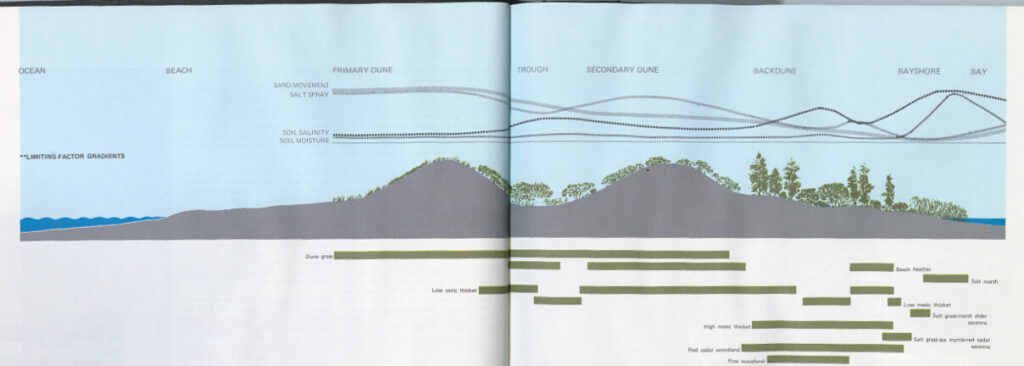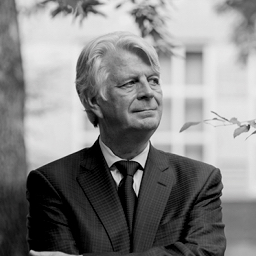For more than a decade, the EcoShape consortium has worked to advance the design philosophy known as Building with Nature and to build expertise through implementing water-related engineering according to its approach. The Building with Nature program today continues the pioneering work of Ronald E. Waterman and remains grounded in the Dutch water sector, but its principles and values speak more broadly to the importance of Nature-based Solutions for sustainable outcomes. Building with Nature operates in conversation with similar approaches that have emerged elsewhere around the world, for example, the Engineering With Nature initiative of the U.S. Army Corps of Engineers, as well as the World Association for Waterborne Transport Infrastructure program, Working with Nature, eco-engineering, and others. Many underlying ideas found in Building with Nature and its related programs can be traced to earlier practices such as the Design with Nature philosophy that emerged in the late 1960s. Yet all of these programs continue
to evolve to address contemporary challenges. Twenty-firstcentury practice calls for new, integrated perspectives on development, sustainability, and system-based thinking in infrastructure development.
In 2019, you launched the exhibition Design with Nature Now at the University of Pennsylvania. One of the more prominent projects was the Sand Motor (2011), developed by the Rijkswaterstaat (the Dutch Ministry of Infrastructure and Water Management Works). What was the significance of including this work?
We contacted people from all around the world and asked them to suggest projects that exemplify the concept of Design with Nature for the twenty-first century. All the projects we selected were clearly grounded in place yet represented interventions that apply in other locations. The Sand Motor uses natural processes to harness energy so as to create something adaptive for the future. Not only is the concept intriguing, its scale and ambition are impressive. The Sand Motor reflects Dutch heritage; making and remaking the coast is central to Dutch culture. In addition, it is a stunning demonstration of collaboration by the various agencies and people involved. When designing with nature, you must be humble and realize that no one can do it alone. It is important to work with other disciplines, as understanding natural processes is a complex enterprise.
The exhibition marked the fiftieth anniversary of Ian McHarg’s seminal 1969 work, Design with Nature. But McHarg was not the first to consider the role of nature.
The idea of designing with nature is ancient. In the Western tradition, it goes back to Vitruvius, whereas in the Eastern tradition, it is linked to concepts like Feng Shui and the balance between the human and the natural. In the United States, Frederick Law Olmsted, who was responsible for Central Park, among other projects, used techniques for understanding natural processes to design parks. Olmsted drew on the transcendentalist thought of American writers such as Emily Dickinson, Ralph Waldo Emerson, and Henry David Thoreau.
The idea of designing with nature is ancient.
With the theories and discoveries of Charles Darwin, Alexander von Humboldt, and others, the understanding of natural processes emerged as an influence on the way we design and plan more directly. McHarg contributed to this scientific perspective of nature. He helped to establish the fields of landscape ecology and urban ecology that have matured over the last fifty years. He understood that through ecology, we can recognize the interrelationships between organisms and their environments. Following from the work of Lawrence Henderson, who advanced the Darwinian notion of fitness, McHarg developed means to analyze and determine the most suitable places for different types of land use.
McHarg was perhaps most successful in identifying places of risk. A McHargian analysis can establish where not to build, because the ecology of the site would expose people and property to danger. The Netherlands has been a leader in this kind of analysis, in terms of identifying flood risk zones related to both rivers and the North Sea. Another well-known Dutch project, Room for the River (2006–2015)—also included in Design with Nature Now—exemplifies landscape design that not only responds to nature but also keeps people out of harm’s way.
How do you understand “design” in this context?
To me, designing is conceiving a better future—better than current conditions. That can mean either a building, a landscape, or a city. The art and science of design lies in conceptualizing improvements at various scales. A successful example is Freshkills Park (2008–present) in Staten Island, New York, designed by James Corner Field Operations. One of the largest landfills in the world, it has been reformulated into a landscape for recreation and renewal that also harnesses the energy of the natural processes of that particular environment. Its design explores the notion of seeding: designing different elements that will change over time.
To me, designing is conceiving a better future — better than current conditions.
How does that idea operate at a range of scales? What ideas, and what types of coalitions, are needed to develop landscape-scale projects?
Scale is humbling. Different scales require different sets of expertise. I am not convinced by the notion, popular among designers, that it is possible to design freely across a range of scales. I am drawn to the idea of nested hierarchies from the biological and environmental sciences: what is whole at one level of organization is only a part at another level. An individual cell may be whole, but it is also one small part of the body.

In design, smaller scale means more control. My daughter is a landscape architect. When she designed my backyard, she had a lot of control. Although she had to deal with her parents as clients, she nevertheless dictated the plants and the hard surfaces, understanding how to successfully cultivate a garden. But when she designs a park, she must work with soil scientists and botanists and involve various city agencies. At the scale of a city or region, the process becomes still more complex. The greater the scale, the greater the number of disciplines involved, and the greater the complexity. Form is still important, but designers leave form-making behind at a certain stage, when they transition to designing the process and all those factors that benefit people.
My daughter is a landscape architect. When she designed my backyard, she had a lot of control.
Charles Eames once observed that all good design is based on understanding constraints. Designers are often concerned that too many constraints limit creativity. I interpret this sentiment to mean that we must know our constraints to find them liberating. We must take advantage of the opportunities they present.
Nature is arguably the most formidable constraint. A building can be designed and calibrated to a local climate, or designed with a mechanical air conditioning system, but sooner or later, the latter becomes both costly and environmentally detrimental. If something is purposefully built in a floodplain, the long-term consequences must also be anticipated. If Frank Lloyd Wright’s Fallingwater (1935) had not been commissioned by a wealthy client, or benefitted from the ongoing financial support of a foundation, it would have fallen into the water long ago. Methods of fighting against natural constraints cannot be sustained indefinitely. We must always be aware of the constraints of a place and design with nature instead of ignoring it.

